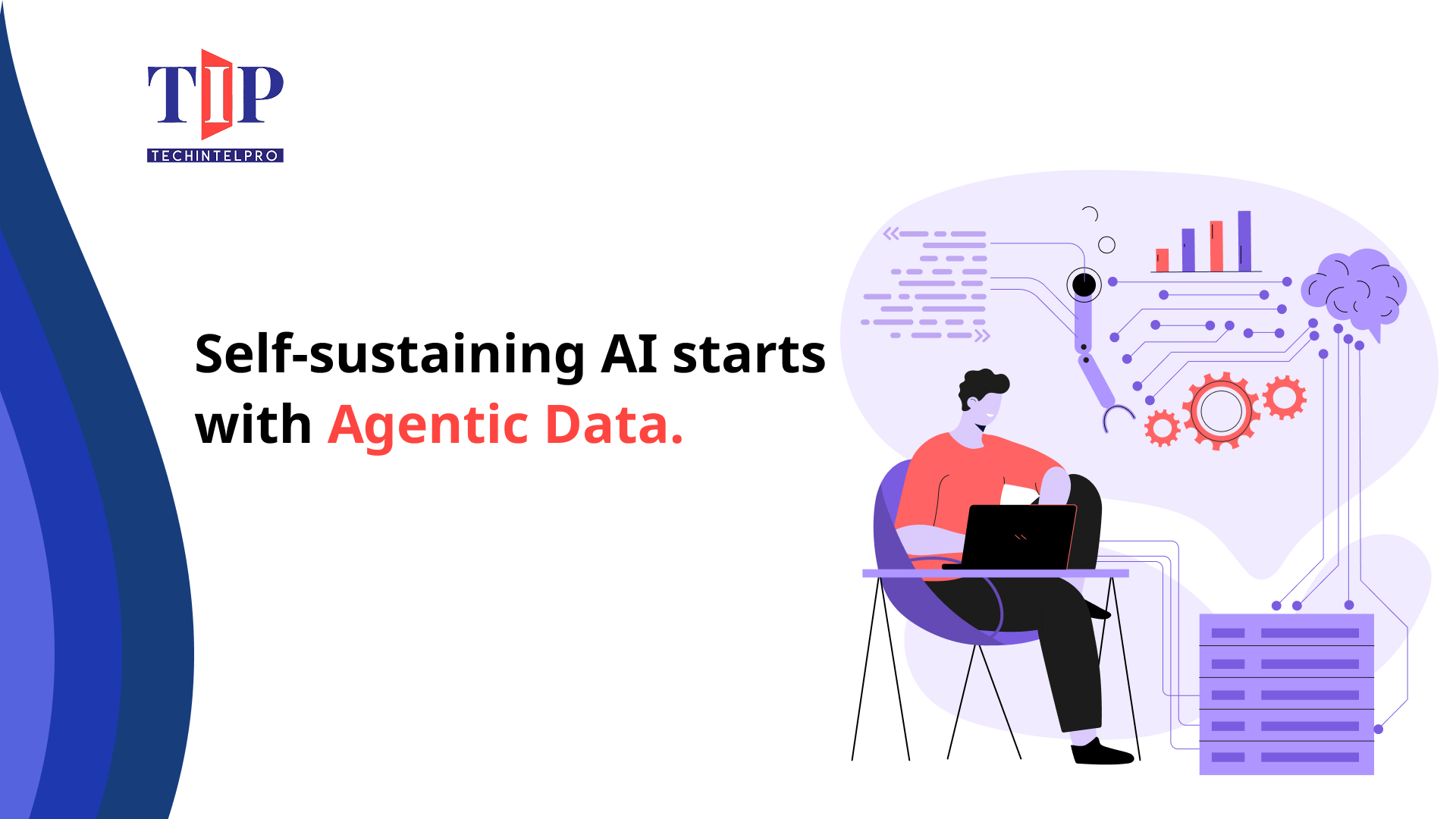For years, data has been the silent force behind Artificial Intelligence. It has been an unseen engine driving every model, algorithm, and automation we trust.
In 2025, a new form of intelligence is taking shape: agentic data that learns, adapts, and organizes itself. It signals a major shift in how enterprises build their AI systems and make decisions.
From passive storage to active intelligence
Traditional data models depend on human-defined rules. Engineers tag, clean, and structure information before it reaches machine learning pipelines.
This process is time-intensive and reactive. Agentic data changes that dynamic. It is designed to act in its own context. It identifies relationships, corrects inconsistencies, and even decides how to interact with other data.
This transformation is made possible by several concurrent trends. AI agents are becoming more capable of reasoning about data. Unified data fabrics now connect structured and unstructured sources. Vector databases allow systems to preserve context through embeddings.
Reinforcement learning models enable data to “learn” the optimal way to represent itself. Together, these innovations create the conditions for data that behaves less like a stored object and more like a living system.
Defining the agentic layer
Agentic data is built for autonomy. It is self-classifying, self-validating, and self-optimizing. Each dataset carries rich metadata that defines its purpose, reliability, and context. When integrated into enterprise systems, it can adjust behavior automatically as conditions evolve.
This means a financial dataset can alter its fraud detection parameters based on transaction volume. A healthcare database can update its risk categories as new clinical findings appear. In both cases, the data refines itself rather than waiting for manual direction.
At the center of this evolution lies the self-organizing system, an architecture designed to keep data adaptive and consistent. Such systems:
-
Map and understand relationships between datasets
-
Adjust data flow and categorization in real time
-
Eliminate redundancy and preserve quality
The outcome is a more agile, self-sustaining foundation for AI. Enterprises gain speed, reliability, and cleaner intelligence without continuous human intervention.
The evolving AI stack
As agentic data matures, it is beginning to reshape the AI stack. The long-standing divide between models and data layers is narrowing. Intelligence now exists at every layer — from ingestion to inference.
This new stack relies on metadata intelligence and semantic context. When data knows its source and quality, AI doesn’t need much help to understand it. The system can sort and organize information on its own. It keeps inputs clean and adjusts quickly as business needs change.
Snowflake’s unified data cloud offers a glimpse of how this transformation looks in practice. By integrating sharing, governance, and collaboration into one platform, it provides the kind of foundation agentic systems require.
In our conversation with Fawad A. Qureshi, Global Field CTO at Snowflake, he noted that “good technology should work silently in the background.” That principle mirrors the essence of agentic data, automation that operates quietly yet intelligently.
Building resilience through autonomy
Agentic data combines efficiency with resilience, enabling adaptable systems. Self-organizing systems detect and correct issues before they escalate. They can track lineage, enforce policies, and maintain compliance without human intervention.
This autonomy allows enterprises to redirect focus from operational firefighting to innovation. Data engineers can oversee outcomes rather than processes. Analysts can trust that what they see is current, accurate, and contextually relevant.
During GITEX Global 2025, Fawad emphasized the importance of responsible innovation and the use of synthetic data for testing and scaling. His vision reflects how agentic data aligns with the broader movement toward ethical automation, systems that can evolve without compromising transparency or governance.
Industry momentum
The momentum behind agentic systems is becoming more visible across the enterprise landscape.
Snowflake’s Cortex framework illustrates how enterprises are extending automation across data layers to manage intelligence securely and at scale. This approach reflects a broader shift toward more autonomous systems built on trust and accountability.
The same approach is gradually influencing other industries. In finance, self-adjusting data frameworks are improving real-time risk visibility. In healthcare, adaptive datasets are streamlining diagnostics through continuous learning. In energy, intelligent data layers are balancing supply models to improve efficiency.
All these developments point to a single direction: intelligence is shifting toward the data itself. Organizations are moving from managing data as an input to empowering it as an active collaborator. The result is faster insight, cleaner automation, and systems that evolve naturally within enterprise ecosystems.
Designing for failure, designing for trust
Building agentic systems requires a new design mindset. Instead of assuming perfection, these systems anticipate disruption.
They are built to fail safely and recover autonomously. This approach echoes Fawad’s point from GITEX: effective systems must be designed for failure.
Agentic data architectures include observability layers that track how information behaves. Provenance tracking and lineage mapping ensure that every transformation can be traced. As a result, human oversight becomes more strategic. Professionals focus on governance frameworks and ethical standards. The system manages the mechanics of learning and optimization.
The philosophical shift ahead
Agentic data goes beyond innovation, redefining the relationship between data, context, and intelligence.
Intelligence is no longer confined to models or algorithms. It is becoming a property of the data itself. In the coming years, AI stacks will depend on this distributed form of cognition.
Systems will combine human intention, machine precision, and data autonomy into a seamless flow of adaptive intelligence. Businesses will not just use data; they will collaborate with it.
As Fawad rightly remarked, the best technology should work silently in the background. Agentic data follows that idea. Working in the background to make systems more intelligent, secure, and adaptable.


